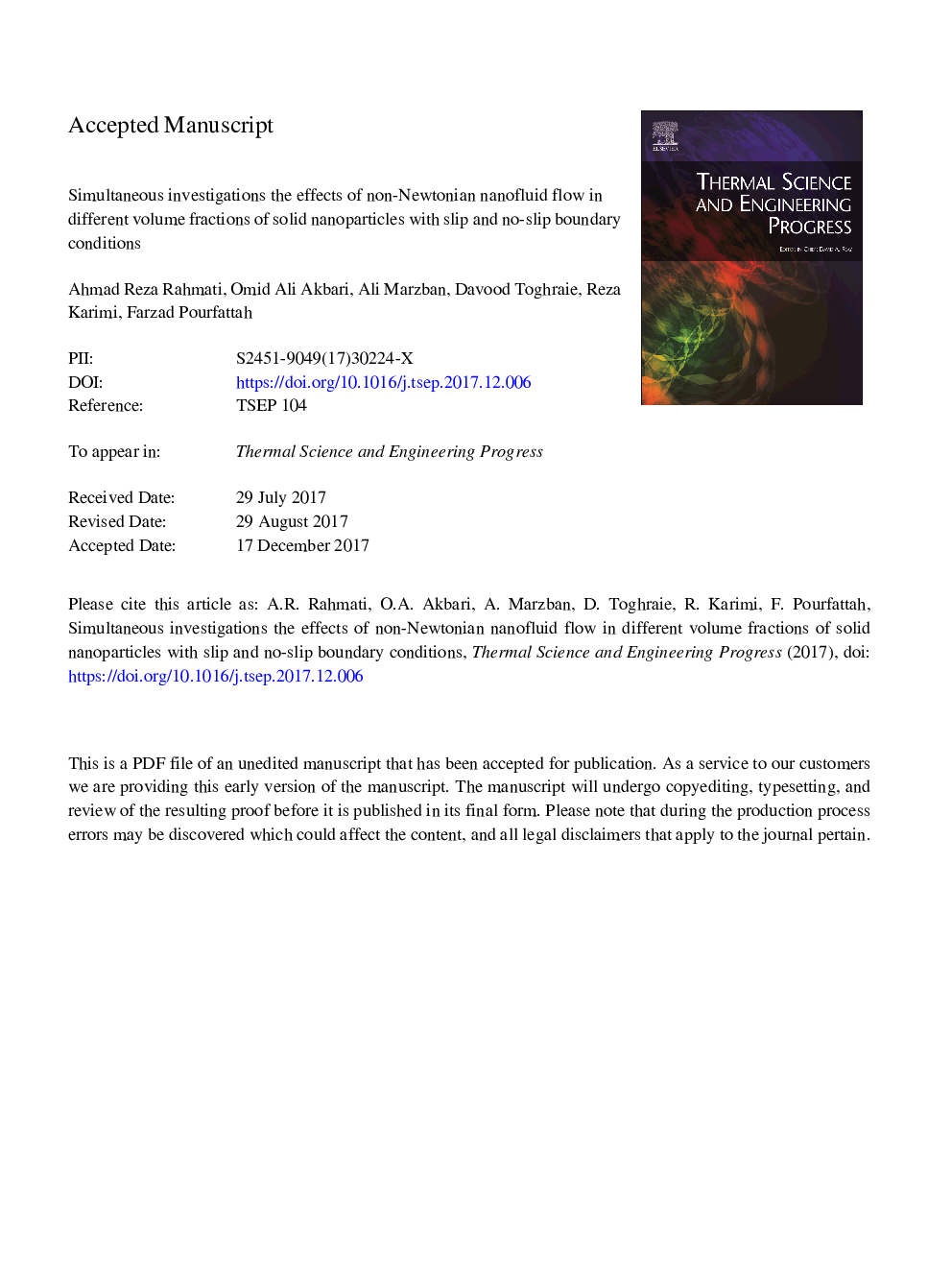| Article ID | Journal | Published Year | Pages | File Type |
|---|---|---|---|---|
| 8918784 | Thermal Science and Engineering Progress | 2018 | 53 Pages |
Abstract
In this study, the laminar and forced flow of non-Newtonian nanofluid in a two-dimensional microtube has been numerically simulated. The non-Newtonian, pseudo-plastic fluid is included of a solution with 0.5% wt fraction of CMC in Water as the base fluid. In this research, in order to increase the heat transfer rate, the mentioned non-Newtonian fluid has been combined with volume fractions of 1 and 1.5% of CuO nanoparticle and has been created the non-Newtonian cooling nanofluid. In this investigation, the effect of slip velocity boundary condition on the wall of microtube has been considered. In order to have an accurate estimation of dynamic viscosity of non-Newtonian nanofluid, the power-law model, for numerical simulation has been used. This research has been investigated in Reynolds numbers of 100, 500, 1500 and 2000. The results indicate that, the increase of volume fraction of solid nanoparticles and slip velocity coefficient, cause the increase of heat transfer. By enhancing the slip velocity coefficient, better mixing accomplishes which causes the reduction of temperature gradients among the fluid layers close to the surface. In Reynolds numbers of 1500 and 2000, comparing to Reynolds numbers of 100 and 500, Nusselt number, on the microtube wall increases significantly.
Related Topics
Physical Sciences and Engineering
Energy
Energy Engineering and Power Technology
Authors
Ahmad Reza Rahmati, Omid Ali Akbari, Ali Marzban, Davood Toghraie, Reza Karimi, Farzad Pourfattah,
